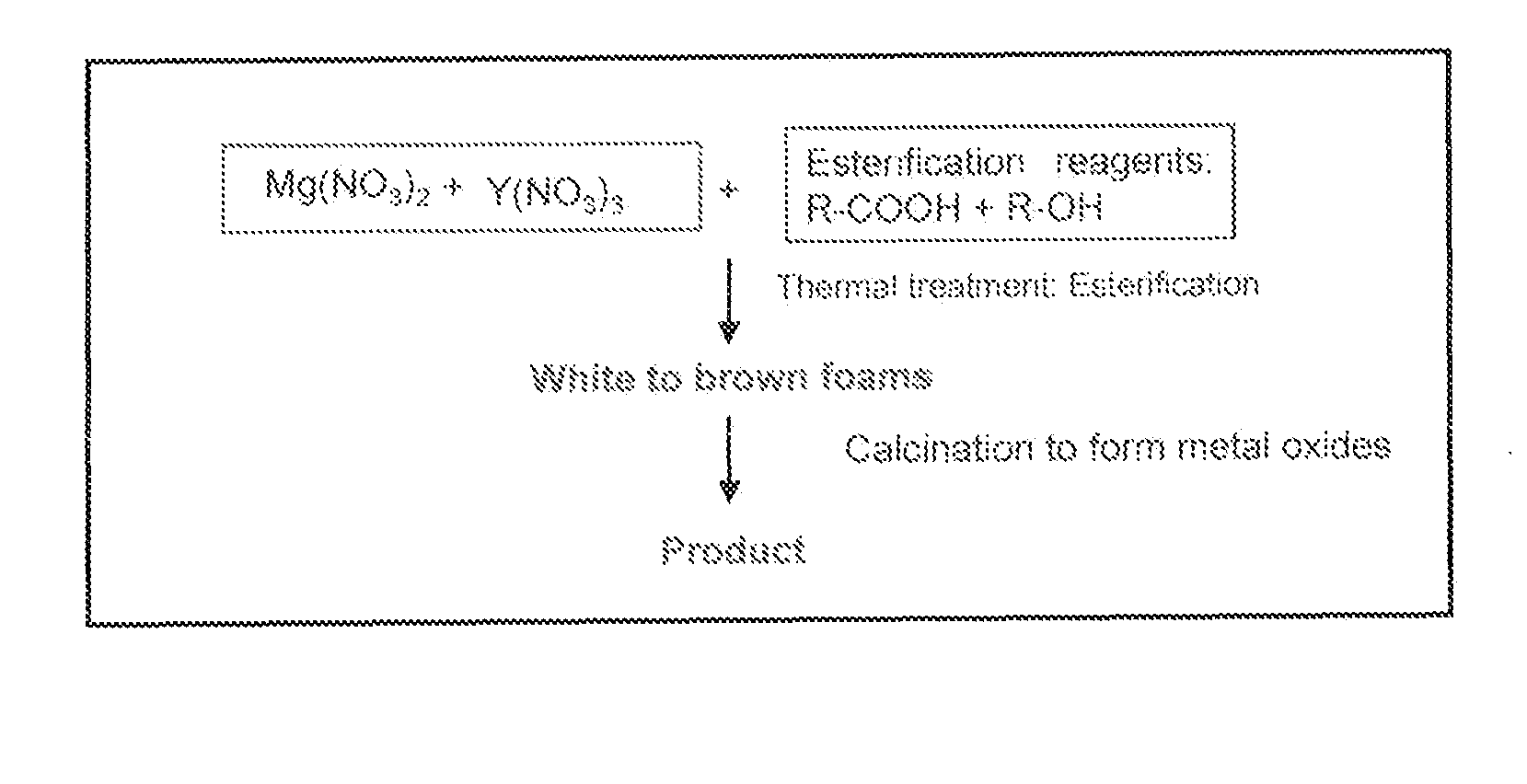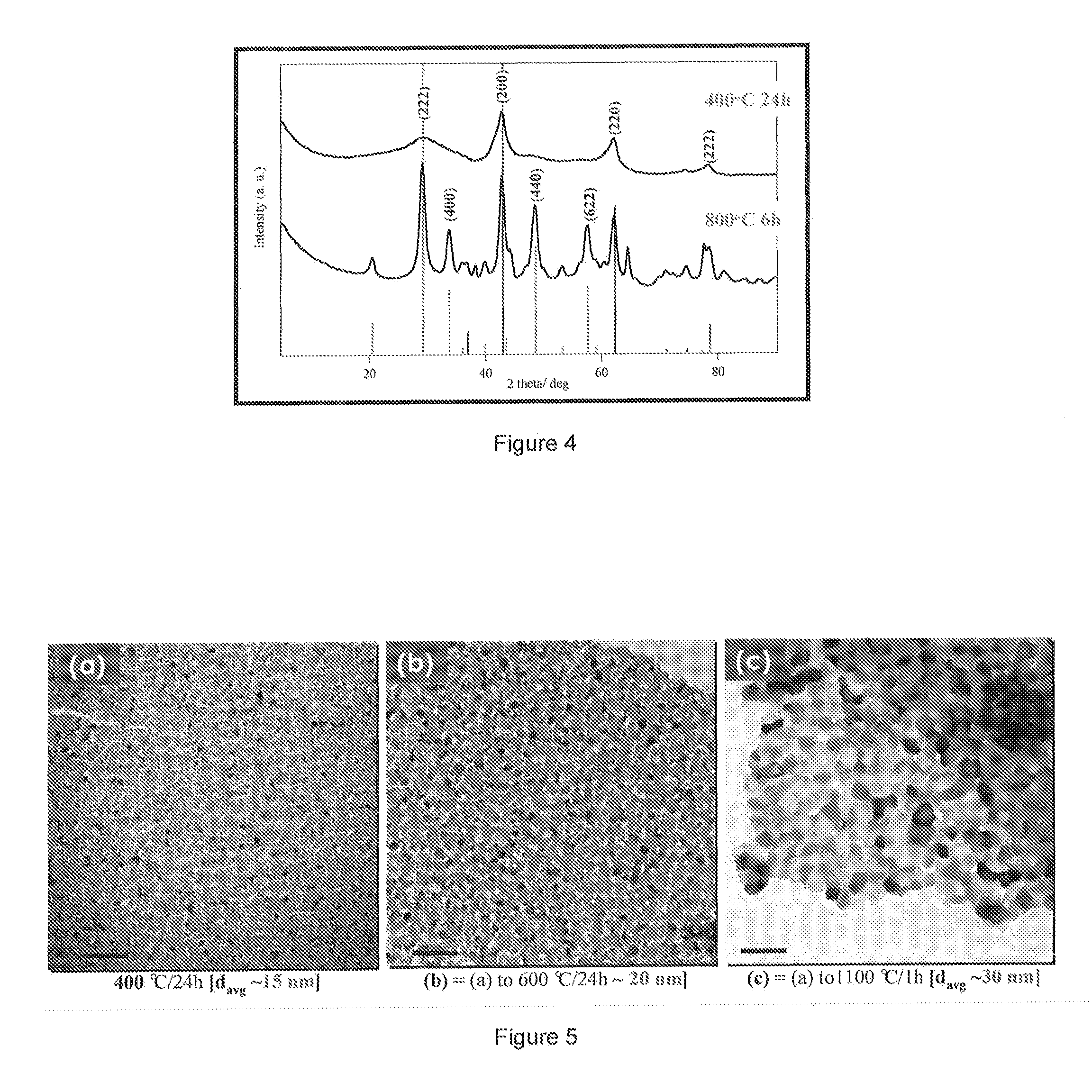Method of synthesizing multi-phase oxide ceramics with small phase domain sizes
a technology of nanocomposite ceramics and phase domains, applied in the field of new, can solve the problems of inability to control conventional synthetic methods for producing ceramics, particularly difficult production of nanocomposite ceramics with fine uniform phase domains, etc., and achieve the effect of preventing particle aggregation and/or precipitation
- Summary
- Abstract
- Description
- Claims
- Application Information
AI Technical Summary
Benefits of technology
Problems solved by technology
Method used
Image
Examples
Embodiment Construction
[0022]The present disclosure will now be described by reference to an exemplary embodiment of the methods, including the sol-gel method and the cation polymer precursor method.
[0023]In this first exemplary embodiment, the esterification sol-gel method utilizes two organic complexing chemicals (e.g., citric acid (CA, R—COOH) and ethylene glycol (EG, R—OH)) to perform an aqueous esterification reaction, leading to formation of polymerized organic foam. R can be any organic chain or backbone. Combinations of useful acids and alcohols can be found in the literature and their suitability can be determined with minimal experimentation. Many combinations of organic complexing chemicals may be utilized, as long as the use leads to esterification at the desired temperature and time for any particular application. In a typical synthesis, following the general sequence of the reaction shown in FIG. 1, an aqueous solution of mixed citric acid and ethylene glycol is prepared. MgO and Y2O3 precur...
PUM
| Property | Measurement | Unit |
|---|---|---|
| temperature | aaaaa | aaaaa |
| temperature | aaaaa | aaaaa |
| temperature | aaaaa | aaaaa |
Abstract
Description
Claims
Application Information
 Login to View More
Login to View More - R&D
- Intellectual Property
- Life Sciences
- Materials
- Tech Scout
- Unparalleled Data Quality
- Higher Quality Content
- 60% Fewer Hallucinations
Browse by: Latest US Patents, China's latest patents, Technical Efficacy Thesaurus, Application Domain, Technology Topic, Popular Technical Reports.
© 2025 PatSnap. All rights reserved.Legal|Privacy policy|Modern Slavery Act Transparency Statement|Sitemap|About US| Contact US: help@patsnap.com



